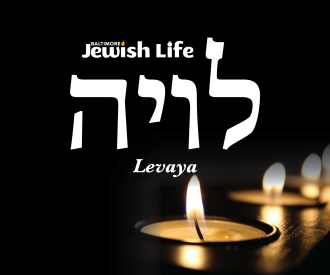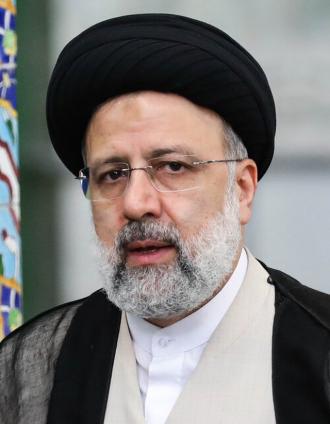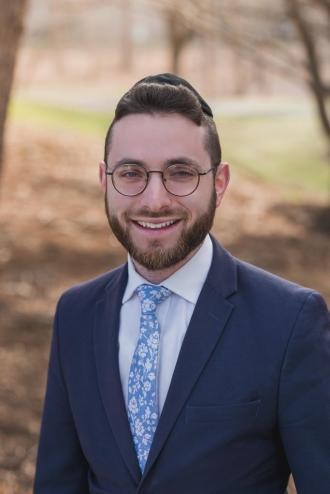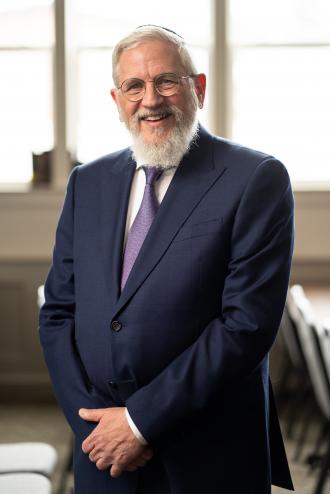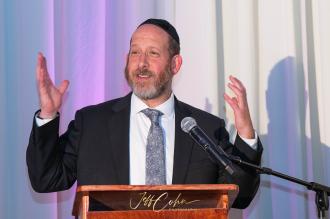The Sfas Emes’ explains that Mishe’nichnas Adar Marbim Besimchoh was not only true after Purim but was also true during the period of the first bais hamikdosh. Adar is the time that Jews gave their machtzis hashekel to participate in the korbonos. The joy of being able to give money and participate in korbonos is the basis for the simchah during the entire month of Adar.
We need to define the concept of simchoh in general, and the simchoh of Purim in particular.
Often, what I find upsetting about people’s concept of simchas Purim is the notion that anything goes. All foreign influences somehow find their expression on Purim. All Jews who are imbued with the deeper concepts and themes of Torah should be repelled by any expression of the culture that denies the fundamentals of our belief.
The truth of Torah has to mean something all year long, including Purim.
Who is Achashveirosh? He had taken over the empire from Belshezar, his father-in-law. Belshezar’s reign came to a close because he was struck dead on the night that he celebrated the so-called lack of fulfillment of the prophecy that the Jews would return from golus.
Non-Jews take a lot of pride in the downfall of the Jews. Jews were a very significant and influential nation in the ancient world and many nations did not appreciate our contributions to civilization. This is why in Rome, the Arch of Titus celebrates the destruction of the bais hamikdosh.
Why was the Beis Hamikdosh destroyed? Was it because of the Babylonian invasion? Or because it was will of HaShem? There was a prophecy which had predicted the destruction in advance, and another prophecy which predicted the Jews would come back after 70 years. If the second prophesy didn’t come true, it meant the first prophecy also wasn’t genuine and that it was Babylonia who truly triumphed over Hashem and His chosen nation.
Belshazar made a calculation which resulted in the 70 years passing without Klal Yisroel returning from golus. So he celebrated by making a feast and bringing out the vessels of the Beis Hamikdosh. Miraculously, he was struck dead. His daughter, Vashti was married to Achashveirosh but he did not have any royal lineage to speak of. He was a simple stable boy. So it was not easy for Achashveirosh to establish himself as the undisputed emperor of the Persian Empire. To solidify his three years of rule he wined and dined all the important people in the government for 180 days. He celebrated the greatest empire in history which destroyed the Beis Hamikdosh and kept the Jews in golus.
He invited everyone to the feast. And after 180 days of non-stop eating, drinking, and zenus, he made a special feast for those in his capital city Shushan.
People find it hard to accept that as Jews who are in golus, we are foreigners in an alien culture. We are bombarded by many different values and lifestyles that are completely alien to Torah. It is not much different than the culture of Achashveirosh’s Persia—totally hedonistic glorified ta’anugei haguf where the ultimate value of life was physical pleasure and enjoyment. No room for the neshomo. In order to celebrate, he invited all. The Jews joined and Achashveirosh wanted their participation. He ensured that everything was kosher and employed Mordechai As the mashgiach.
This feast is reminiscent of what unfortunately we find people taking part of on Purim in our time - non-stop drinking and partying, a total denial of the neshomo of the human being.
Then Achashveirosh decided to bring out the vessels of the Beis Hamikdosh for the guests to get drunk on. We sing this posuk to the tune of Eichoh. And the Jews participated! How could it be that a self-respecting Jew could join a celebration that was celebrating the kingdom that destroyed the Beis Hamikdosh, celebrating his own nation’s downfall and dissolution? How could he stand there and watch people around him using the vessels of the Beis Hamikdosh to get drunk without being repulsed by it?
Halacha is meant to convey technical acts that are forbidden, but halacha is also supposed to engender a certain lifestyle. This is a major theme in the Rambam’s thought. The lifestyle of hedonism which says the be-all-and-end-all of life is to indulge in the physical –even with the greatest hechsher for everything you are doing, means you have not made any room for the life of the neshomo. There is no such thing as “Kedoshim Tihiyu”. The destruction of the beis hamikdosh doesn’t mean anything to you. Defilement of the vessels of the beis hamikdosh doesn’t mean anything to you. A lot of things that go on in the so-called Orthodox Jewish world emerge from an attitude that we want to imitate a non-Jewish way of living as close as we can while fulfilling all technical halachic requirements.
Chazal ask why the Jews were condemned to total annihilation. The answer is because they participated in the feast of Achashveirosh. This participation betrayed a complete lack of understanding of what it means to be a Jew - you lost the sensitivity to kedushoh. You lost the sensitivity that there is a higher way of living than that of all these drunken hedonists rolling in the streets around you. When you lost that sensitivity, Hashem says there is no point in going on.
The idea of simchoh is widely misunderstood. People think it is just having a wonderful time going to hilarious wild parties. These events are designed primarily for unhappy people who feel a vacuum in their lives and are desperate for a distraction. They have to escape their pathetic reality and immerse themselves in some other environment or state of mind. It is similar to why people abuse drugs and alcohol. Party-going comes from a general lack of fulfillment in life and it is symptomatic of a deep lack of simchoh.
When a person is happy with himself and gets a deep sense of satisfaction with who he is and what he is doing in his life, then he has the capacity for genuine simchoh. What makes a person satisfied with himself? “Toras Hashem Temimoh, Meshivas Nofesh”. Rav Chaim Volozhin explains that Torah learning reconnects a person’s neshomo to its Source. When a person feels disconnected from his source and from what gives his life meaning, he naturally feels unhappy. Some people travel away from home—away from family and friends, and feel alone and separate from everyone around them. They feel a lack of connection to their source and feel unhappy. Other people can be physically isolated from family and friends but still feel happy. Why? They connect to their essential self –who they really are at the core. The challenge is to reveal to ourselves who we really are.
The Megillah begins with a drunken feast, a wild party which was the norm in Persian society. Because the Jews participated in that kind of party, they lost their purpose of existence and were condemned to annihilation.
At the end of the Megillah, we read about the days that flipped around - from days of woes and terror to days of simchoh and merriment. Not by forgetting who they were, but by experiencing who they really were and connecting to other Jews and sharing that special experience of being connected to Hashem together. When you don’t share your simchoh with others and you are only thinking about yourself, you aren’t really happy.
The first seudoh in the Megilloh is focused around the selfish desires of the individual. You think about what you enjoy and you get it. Other people are not your concern. You focus only about what pleasures you can get. A person who is truly be’simchoh wants to share it with other people. He wants other people to be be’simchoh as well. Their simchoh merges together and becomes greater than each one as an individual. When a person realizes who he is at the core and where he is connected to, then he can have simchoh.
In the Megiloh, the Jews realized they sinned and they had to turn to Hashem in teshuvoh and tefiloh if they were to be saved from calamity. The Rambam writes that the reason why Purim was made into a Yom Tov was to teach us the power of our tefillos. Klal Yisroel realized through the events of the Megilloh that Hashem is close to them and Hashem wants to hear us call out to Him. Once they realized this, they saw Hashem was in control of their destiny—that He had never abandoned them after the churbon, and that their alignment with the Persian Empire was totally misplaced. We turn to Hashem alone because that defines who we are at essence and we are truly be’simchoh in this realization.
The Rambam says the greatest simchoh is to gladden others - to connect to others in a real and genuine way by giving and sharing of your inner self. This simchoh can be enhanced by physical pleasure as well. In the times of the Beis Hamikdosh, a person brought shalmei simchoh to eat a korbon shlomim and enjoy it “lifnei Hashem”. You used the meat and wine to express that happiness of closeness to Hashem and satisfaction with your inner self. That is simchoh and it can be shared with other people.
A korbon todah requires forty loaves to be made and has to be eaten within a short amount of time. The one who brought the korbon couldn’t possibly eat all of it himself and he must find people to share it with. That is the purpose—to share your expression of gratitude to Hashem with others. You can’t sit in your house all by yourself. When you are connected with your true inner self and you are “lifnei Hashem” and you want to express it, then the meat and wine will enhance it.
When the Jews realized that they are so blessed that Hashem is waiting for us to daven to Him and He just needed to make them understand that there is no other power which can help them, and when they realized that following Persian lifestyle of hedonism and selfishness is the recipe for disaster, then they can have true simchoh. And celebrate with meat and wine as well.
The Megilloh never uses the term simchoh to describe the experience of the party-goers at Achashveirosh’s feast. They couldn’t have any real simchoh because they were isolated and inside their own bubble of self-gratification -trying to escape from an unhappy self.
In the ancient world the pagan cults employed drugs and alcohol to bring themselves to a state of religious ecstasy. But this is not the way of genuine spirituality. When you first connect to your real self and bring it close to Hashem, then you find a true religious experience.
Purim is a very important holiday. It has nothing to do with the massive chillul Hashem which takes place every year when thousands of yeshivah bochurim take to the streets drunk and make a total nuisance of themselves for three days straight. That is what happened in the beginning of the Megilloh.
A person, who is deeply happy and satisfied with his inner self and wants to enhance that true simchoh, can use meat and wine to express his deep connection to Hashem.
When a person feels isolated and disconnected from everything, he goes into a depression and needs to escape with alcohol. When a person goes deep into himself and realizes that he is made with a Tzelem Elokim, and Hashem is just waiting for him to break out of his narrow view of the world and reach out to let Hashem into his life, that causes a tremendous simchoh.
That was the simchoh the Jews had in Persia. Hashem sent them a very strong message. If you want to lose yourself in the indulgent and selfish culture of Achashveirosh and celebrate the golus alongside him, then you have lost your right to exist. Whenever the Jews fail to latch on to their own unique identity and their own unique role to play in history and destiny, they quickly fade from existence. There is no reason for them to be around.
When the Jews made the turnaround and fasted for three days straight and they did teshuvoh on all that hedonistic, self-centered eating and drinking that they “enjoyed” at Achashveirosh’s party which didn’t give them any real simchoh at all, then everything started to change direction. When Klal Yosroel changed their direction in realizing who they were and where their true inner self-worth comes from, then Hashem changed His hanhogo towards us and brought about the yeshuoh.
The posuk says the Jews had orah, simchoh, sosson and yekor. Chazal say oroh – light - is Torah. But why can’t the posuk simply say that the Jews had Torah? The answer is that you can experience Torah in different ways. The Torah can be a burden, a suffering under constricting, legal obstacles that get in my way of living a hedonistic, selfish life. Or the Torah can be illuminating—showing me how I can understand how Hashem runs the world and guides me throughout my life. I can understand the world more deeply through Torah.
Sosson is bris miloh. Why? Because the miloh tells us the body of a Jew has kedushoh and he can sanctify his body through mitzvos. Our bodies carry the symbol of our bris with HaShem. A Jew can make his body a vehicle for connecting to Hashem and living a life of kedushoh. The Jews forgot that capacity of kedushoh for the body, and when they realized it, it became sosson.
Purim is a very important day because it teaches us what true simchoh really is and how living with the values and uplifting lifestyle of the Torah allows us to attain that simchoh.
“Ve’nahafoch Hu” is not about making fools of ourselves in public. In means a total change of attitude of the Jews which triggered a change in Hashem’s dealing with us and that changed Achashveirosh’s heart to being favorable to the Jews. That is it.
The Ari Hakadosh commented that Yom Kippur is a yom ki-purim. We can serve Hashem by understanding what Purim is and expressing that understand through a seudoh imbued with Torah and concern for other people. It is a simchoh that goes hand-in-hand with matanos le’evyonim and mishloach monos. If the seudoh is a private indulgence of the body, then there is no room for sharing with others. But if it based on my connection with Hashem, I want to share with other people. I am part of a community that shares this special identity and I connect with them on that deeper level. So it will bother me if I know that someone is poor and suffering and is not able to be happy on Purim. That why it comes with matanos le’evyonim. I understand my essential self and I share that identity with other people. My simchoh is diminished when they have sorrow, and it is enhanced when I enable others to have it as well.
We should devote some deep and serious thought to these ideas of Purim and we should be zoche to celebrate a true simchas Purim.

